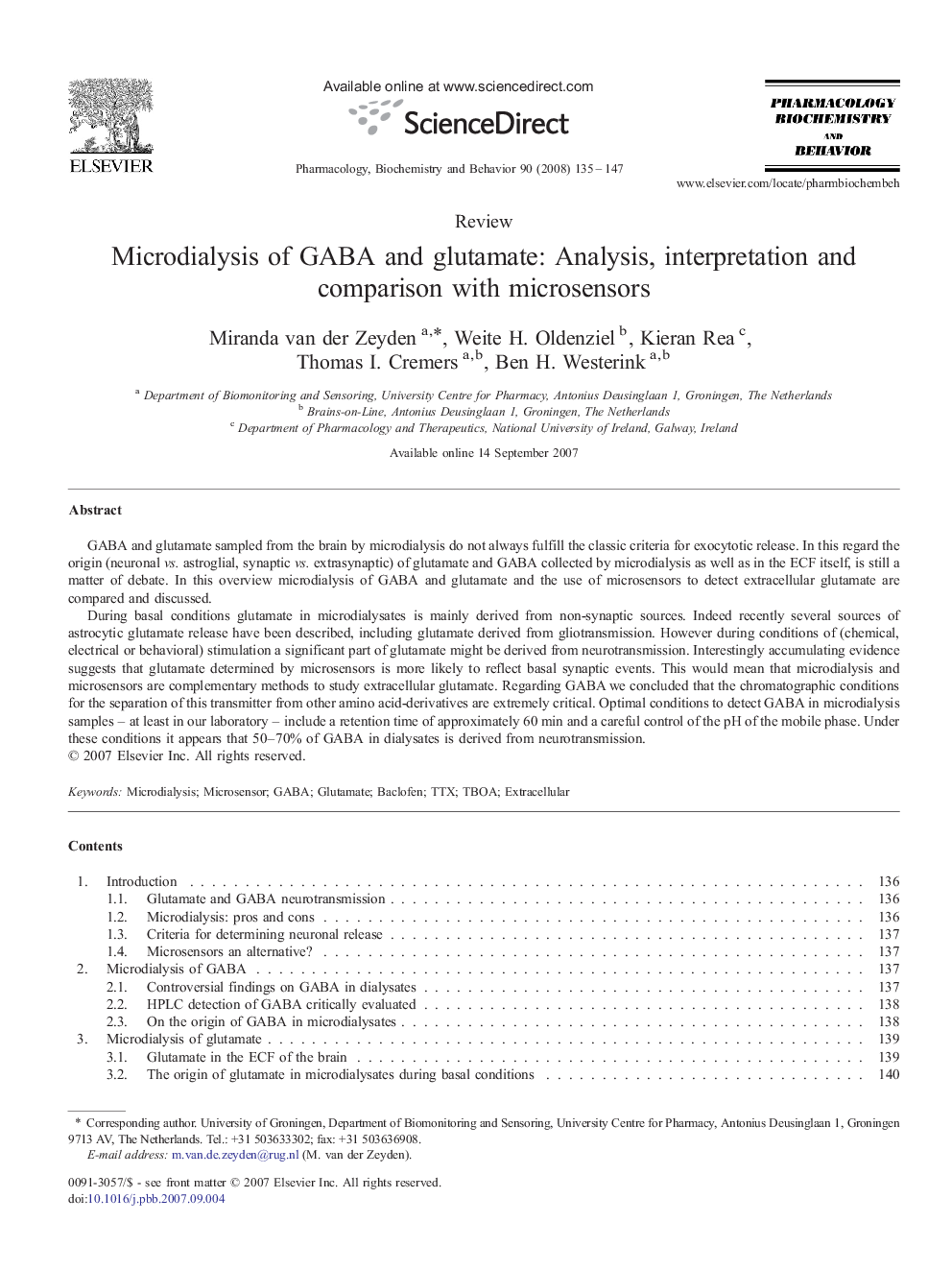| Article ID | Journal | Published Year | Pages | File Type |
|---|---|---|---|---|
| 2014394 | Pharmacology Biochemistry and Behavior | 2008 | 13 Pages |
GABA and glutamate sampled from the brain by microdialysis do not always fulfill the classic criteria for exocytotic release. In this regard the origin (neuronal vs. astroglial, synaptic vs. extrasynaptic) of glutamate and GABA collected by microdialysis as well as in the ECF itself, is still a matter of debate. In this overview microdialysis of GABA and glutamate and the use of microsensors to detect extracellular glutamate are compared and discussed.During basal conditions glutamate in microdialysates is mainly derived from non-synaptic sources. Indeed recently several sources of astrocytic glutamate release have been described, including glutamate derived from gliotransmission. However during conditions of (chemical, electrical or behavioral) stimulation a significant part of glutamate might be derived from neurotransmission. Interestingly accumulating evidence suggests that glutamate determined by microsensors is more likely to reflect basal synaptic events. This would mean that microdialysis and microsensors are complementary methods to study extracellular glutamate. Regarding GABA we concluded that the chromatographic conditions for the separation of this transmitter from other amino acid-derivatives are extremely critical. Optimal conditions to detect GABA in microdialysis samples – at least in our laboratory – include a retention time of approximately 60 min and a careful control of the pH of the mobile phase. Under these conditions it appears that 50–70% of GABA in dialysates is derived from neurotransmission.
